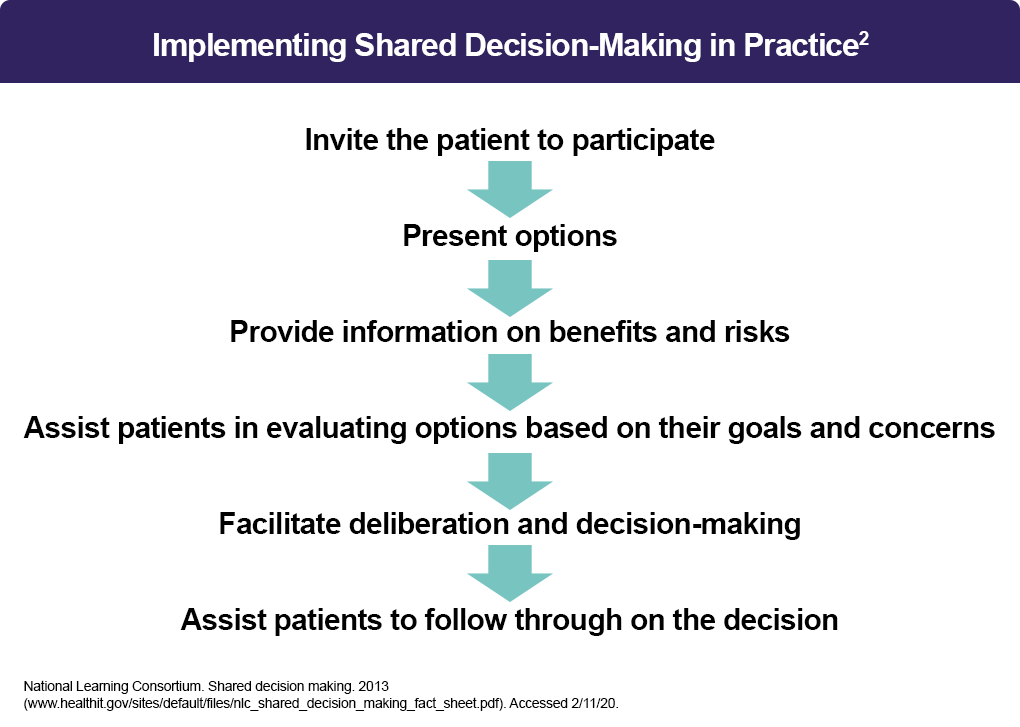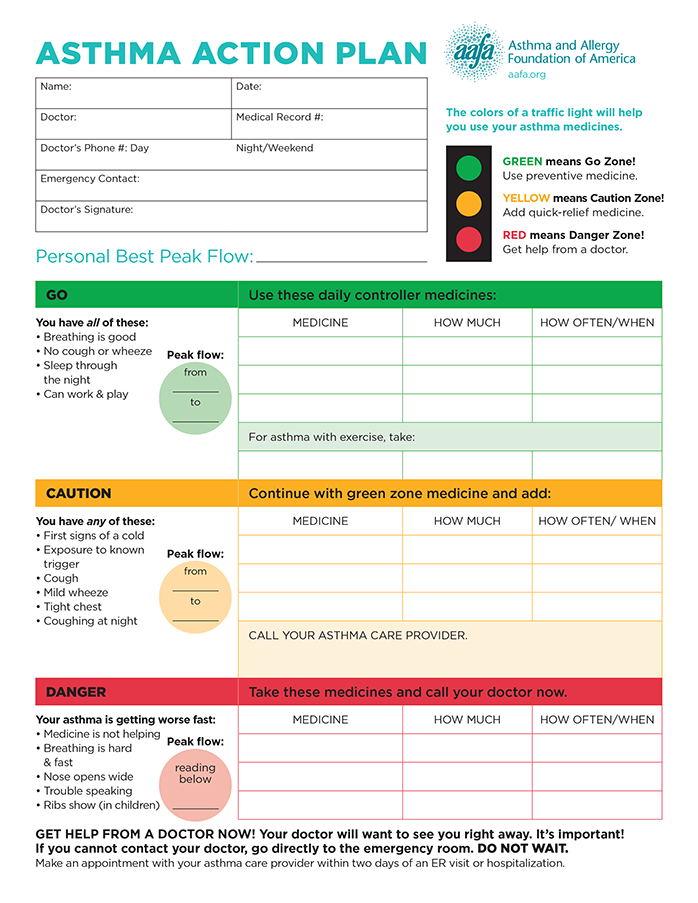Patient-centered Information
A Patient-Centered Plan for Care
Although there is no cure for asthma, there are many ways to effectively manage asthma. As a patient with asthma, it is crucial that you work together with your healthcare provider to ensure that you are aware of the key features of asthma and your asthma treatment plan. It is important for your provider to help you understand and recognize asthma symptoms and an asthma attack. Ask your provider if you have questions about how to use, and at times self-adjust medication as part of your asthma treatment plan. As part of the healthcare team, you must understand and appreciate their vital role in ensuring the best possible health outcomes. Make sure you feel comfortable expressing your concerns and questions to your provider so that you can determine how best to manage your asthma action plan. Communication and understanding are vital to effective management of severe asthma.1,2

The Asthma Action Plan
Asthma action plans are management tools healthcare providers can use to help optimize a patient’s asthma control. Using an asthma plan as part of your education and management has the potential to reduce your missed school/work days, unscheduled clinic visits, and reduces the likelihood you will need to use hospital services. A crucial part of this process is developing an asthma action plans with your clinician. This will empower you to prevent your symptoms from getting worse and to take your prescribed controller/rescue medications consistent with the plan. The 5 effective elements of asthma action plans as follows1:
- Recommends doses and a schedule of daily medications, as well as how to adjust medications in response to symptoms or peak flow measurements
- Provides a written record of the patient’s best peak flow measurement and ranges that help to expose situations that may warrant patient action
- Provides warning signs and symptoms that may warrant closer monitoring or acute care
- Provides emergency numbers for healthcare providers, emergency departments, transportation methods, and other relevant information that patients may need in an emergency
- Provides a list of triggers that could cause asthma attacks, giving the patient access to a list of items to avoid
An example of an asthma action plan is provided below.3

References:
- Rance KS. J Multidisip Healthc. 2011;4:299-309. doi:10.2147/JMDH.S22966
- National Learning Consortium. Shared decision making. 2013 (www.healthit.gov/sites/default/files/nlc_shared_decision_making_fact_sheet.pdf).
- Asthma and Allergy Foundation of America. Asthma action plan. 2015 (https://www.aafa.org/asthma-treatment-action-plan).
